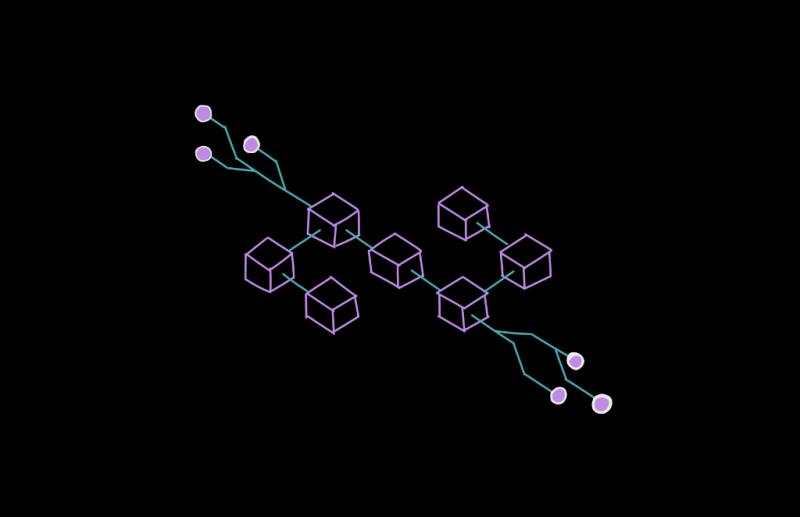What Are Blockchain Nodes? A Detailed Guide

Blockchain nodes are a hot topic in blockchain right now. And rightly so, because nodes are a vital component of a blockchain's architecture. Data on a blockchain would be inaccessible without nodes. Knowing that, let’s delve into and understand what are nodes in blockchain.
Infrastructure
Blockchain is nothing but a series of data that are stored in the form of blocks. These blocks are distributed widely among different nodes. Any device can be defined as nodes such as computers, laptops or even large servers.
All nodes on the blockchain are linked to each other and continuously exchange the most recent data with one other to keep all the nodes up to date. Therefore due to decentralized and peer-to-peer infrastructure, all the data is stored on nodes rather than on a centralized server which prevents the data integrity and reduces the risk of failure.
If you haven’t the slightest idea about blockchain, the recommendation would be to learn about blockchain first. It’s not too difficult to grasp, we promise.
The functionality of blockchain nodes
When a miner seeks to add a new block of transactions to the blockchain, the block is broadcast to all network nodes. Nodes can accept or reject a block based on its authenticity (validity of signatures and transactions).
When a node accepts a new block of transactions, it saves and stores it on top of the existing blocks. In a nutshell, nodes do the following:
- Nodes determine if a block of transactions is genuine and then accept or reject it.
- Nodes save and store transaction blocks (storing blockchain transaction history).
- This transaction history is broadcast and disseminated by nodes to other nodes that may need to synchronize with the blockchain (need to be updated on transaction history).
What are different types of blockchain nodes
Complete Blockchain Nodes
A complete blockchain node, also known as an "archival" node, holds the whole blockchain and saves every transaction in its database. Furthermore, complete nodes validate blocks and maintain network consensus.
Furthermore, certain complete nodes can add transaction blocks to the blockchain. Complete nodes help lightweight nodes by allowing them to broadcast transactions to the network without having to download the whole blockchain.
Pruned Blockchain Nodes
Pruned nodes make disc space available by eliminating or "pruning" blocks, beginning with the oldest. Pruning nodes erase old transactions after downloading the whole blockchain, leaving just the most current ones.
Lightweight/SPV Blockchain Nodes
Lightweight nodes merely download the "block header," which is the block's metadata. These nodes require less storage capacity and purely rely on data from complete nodes to provide simplified payment verification (SPV).
Master Blockchain Nodes
Masternodes are nodes that validate and record transactions on the blockchain. They, unlike full nodes, cannot add blocks to the network. Masternodes, on the other hand, may receive network incentives. Masternodes are also important in some on-chain governance structures.
Mining Blockchain Nodes
Mining nodes are in charge of freshly created cryptocurrency as well as the effort required to create new blocks. These nodes can be either full or light, and they frequently demand significant amounts of energy to "mine" transactions. Depending on the sort of consensus mechanism used by a blockchain network, mining nodes must demonstrate that they have completed particular duties.
Staking Blockchain Nodes
Staking nodes, like mining nodes, validate transactions across a blockchain network to maintain the consensus process. The widely used proof-of-stake (PoS) consensus method allows validators to receive rewards by verifying transactions without incurring the high computational costs of mining nodes.
Lightning Blockchain Nodes
The Lightning node is a network of blockchain nodes that are built on top of the Bitcoin blockchain. The Lightning Network's goal is to minimize congestion on the Bitcoin blockchain and enable quicker, lower-fee transactions. Lightning nodes pull transactional data off the main Bitcoin chain and verify it before re-pushing it. As a result, Lightning nodes relieve some of the loads carried by Bitcoin nodes.
Blockchain Node Responsibilities
Each sort of node on the network has varied needs depending on the blockchain. However, certain critical duties are shared across several networks. Accepting and rejecting transactions based on their legitimacy is one of the most important roles of a blockchain node.
Nodes also hold blocks of cryptographically connected transactions. Furthermore, nodes serve as a point of contact for anybody in the network, including other nodes, to query the blockchain. Lastly, nodes let people access the blockchain's data.
Why are nodes important in blockchain?
One of the most significant advantages of blockchain technology is its immutable nature that protects data integrity. The replication of the same transaction record on numerous computers across the world, as well as the interweaving of transactions, enables next-generation levels of security, decentralization, and transparency.
Blockchain nodes are critical components of this distributed network of computer devices because they communicate the state of the blockchain throughout the network. If a node broadcasts inaccurate data, the network can immediately detect it and mitigate the problem.
Blockchain transactions are immutable and essentially unquestioned because of nodes. Blockchains would be nothing more than sophisticated, untrustworthy databases without blockchain nodes.
Furthermore, nodes enable blockchain networks to function without the need for a central authority or middlemen. A blockchain network may survive the destruction of an entire area or country if only one node remains. All network members may examine on-chain data using a block explorer thanks to nodes. Transactional data on public blockchains would not be visible to the whole network if nodes were not present.
Summary
Nodes are essential to the operation of a blockchain network because they ensure data integrity and keep all members honest. Most blockchain networks employ monetary incentives like mining or staking to encourage users to run full nodes. Regardless of the incentives, users voluntarily set up their own full nodes because they believe in the future of a project and want to help and maintain it as much as they can.
However, keep in mind that running a full node incurs costs and risks. While there are various available instructions, the process of creating them may be too difficult for those new with blockchain and programming.
Author and bio:

Sinwan Zahid
Content Lead at Metaschool - the best and most efficient web3 learning OS to elevate the future of the web. Linkedin Profile: https://www.linkedin.com/in/sinwan-zahid/
More to Read:
Previous Posts:




